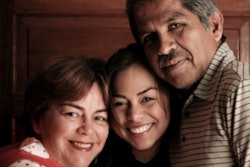Breast cancer screening uptake is higher for low-income women who receive government housing assistance compared to those who don’t, according to findings published November 9 in the American Journal of Preventive Medicine.
Researchers led by Jordan Baeker Bispo, PhD, from the American Cancer Society in Atlanta found that the odds of breast cancer screening were 30% higher for women receiving housing assistance in urban areas and doubled for women aged 45-54 years and those of Hispanic ethnicity.
“The findings… suggest that access to housing assistance facilitates utilization of breast cancer screening among some financially marginalized groups,” Bispo and colleagues wrote. “However, they also support prior conclusions that resolving housing affordability is not sufficient to eliminate socioeconomic disparities in cancer screening.”
Previous studies have shown the impact of socioeconomic factors on breast cancer screening, as well as morbidity and mortality. Despite increased insurance coverage brought on by the Patient Protection and Affordable Care Act (ACA), financial hurdles still prevent adults with low income from obtaining preventive services like cancer screening.
The Bispo team compared the use of breast cancer, cervical cancer, and colorectal cancer screening among renters with low income who did and didn’t receive government housing assistance.
The researchers included data from the 2019 and 2021 National Health Interview Survey. This included data from 2,258 breast cancer, 3,132 cervical cancer, and 3,233 colorectal cancer respondents, respectively.
The team found that screening for breast cancer and colorectal cancer was significantly higher among women who received assistance compared to those who did not. It also reported no significant difference for the cervical cancer respondents.
Cancer screening utility among women who receive, don’t receive government housing assistance
| Cancer screening utility among women who receive government housing assistance compared to those who do not | |||
|---|---|---|---|
| Type of cancer | No assistance | Assistance | p-value |
| Breast | 50.8% | 59.7% | < 0.01 |
| Colorectal | 44.1% | 57.1% | < 0.01 |
| Cervical | 64% | 67.1% | 0.184 |
The researchers also found no significant differences between the assistance and no-assistance groups for either breast cancer or colorectal cancer screening in models adjusted for sociodemographic characteristics, health status, and insurance.
However, the team reported that in stratified adjusted models, housing assistance was significantly linked to increased breast cancer screening in other areas. These included screening in urban areas (adjusted odds ratio [aOR] = 1.35), among Hispanic women (aOR = 2.20), and women ages 45-54 (aOR = 2.10).
The study authors suggested that social policies could improve access to breast cancer screening and early cancer detection among marginalized racial and ethnic groups. They cited an example that Hispanic women are less likely to be diagnosed with early-stage breast cancer than their non-Hispanic white counterparts, partially owing to lower mammography use.
The authors called for future studies to test whether there are sensitive periods when policies that address unmet social needs are critical for supporting engagement in preventive care. They also called for future research to consider whether different types of assistance impact cancer screening.
“Housing assistance recipients tend to be very low-income, and reducing their rent burden does not directly address the myriad of other sources of financial strain that can prohibit healthcare seeking,” the authors wrote. “Furthermore, recipients of housing assistance still often live in socially and economically distressed neighborhood contexts where access barriers are pervasive.”



















